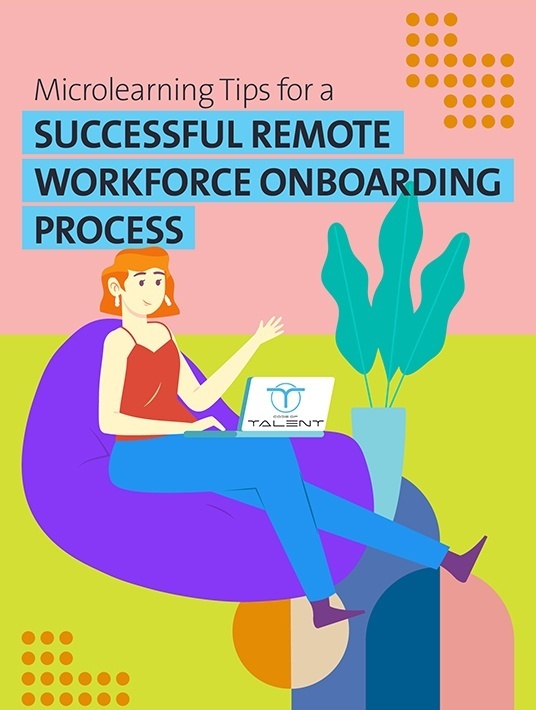How To Achieve A Faster Employee Onboarding Process
With the current economic climate forcing an accelerated shift to remote work, tools, and technologies that allow remote teams to work efficiently are fast becoming an organizational priority. However, the growing need to efficiently onboard new workers with solutions that do not require them to be in the same physical location has been overlooked somewhat. Under the current economic climate, it has become almost critical to actively looking for solutions that make the remote employee onboarding process easier and more effective.

But first, it is important to examine what onboarding is and why it is important. Most individuals see onboarding as a type of orientation. Although onboarding begins on the first day of the worker, this is a distorted understanding of what the onboarding process should be.
The purpose of orientation is to help individuals determine where they currently stand and how they can do what they are supposed to—in short, discover the specifics of their duties. The aim of onboarding, however, is to immerse workers in the culture of the business as well as to provide the necessary understanding of responsibilities.
Boosting The Employee Onboarding Process
Helping new workers acclimatize to their positions and company culture is critical to their overall success in the organization. Microlearning platforms can ensure this by utilizing critical onboarding data analytics.
Microlearning platforms can be incredibly useful when onboarding new recruits, refining products, or training the existing remote staff. These platforms utilize analytics to allow you to deliver content that is simple to develop, easy to edit, and enjoyable to experience.
It is important to keep in mind that transitioning to microlearning cannot happen overnight. Rather, a gradual and measured progression of the attitude of your company towards training and its role in the company is required. This often requires utilizing microlearning and data analytics the right way throughout the employee onboarding process.
Instead of only concentrating on training to tick the training completion columns, all of the stakeholders—from directors to frontline workers—must understand (and buy into) the value of continuous learning as essential to being flexible, efficient, and productive both on an individual and organizational level. The following are the main steps to follow to enable a faster employee onboarding process with microlearning analytics.
1. Begin By Building A Business Case For Microlearning
As many individuals in your company may not be comfortable with the idea of microlearning you may need to compile some solid evidence purpose. This could be an external vendor or partner that specializes in online learning and microlearning.
You could also take help from your contemporaries in similar organizations who have already started their transition. Talk to these people so that you don’t repeat the mistakes they made along the road to microlearning adoption, for enabling a faster employee onboarding process. For instance, Coca-Cola uses our microlearning platform, Code of Talent, to shape highly engaging and innovative digital learning experiences for their Sales Organization. Find out how the sales trainers become directly responsible for reflecting business results with the help of Code of Talent.
2. Bring Peers And Key Stakeholders In The Conversation
Microlearning needs a paradigm change in how people perceive learning at work in order to have a prolonged effect. Even today, many HR people and organizational leaders are only acquainted with place-and-time learning that occurs multiple times during a year at a formal event. This is the kind of conventional training most Learning and Development professionals have made a living out of. However, it is high time that this changed.
Before you start developing a grand plan, contextualize the data by holding casual discussions and collecting information about the types of business problems microlearning might address. Drive awareness about microlearning within the organization, so that employees and senior leadership can understand the changes in the way we learn and the benefits of learning while doing.
3. Evaluate Your Current Content And Strategies For Onboarding Remote Employees
Some of your current technology, tools, and content for training will remain intact but a lot of it would either go away or need some revamping. Once you are aware of what works within your organization, you can make educated decisions about how you adapt your strategies to develop your broader, long-term learning plan.
Use numbers and data analytics to evaluate your current content and strategies for onboarding remote employees and be brave enough to let go of everything that is not working. Also, let go of anything that works but consumes a lot of your time and resources in doing so. Making these decisions will be much simple if you use data analytics to remain focused on business outcomes and generating measurable impact through new employee training.
4. Get A Better Understanding Of Your Audience
If you want to improve your existing employee onboarding process and make it faster, then you need to develop a better understanding of your audience. Microlearning is all about enabling remote workers to improve their actions to address problems and produce results.
You have to consider the day-to-day job expectations and challenges of your audience to satisfy this need. Do your research to decide where "moments of need" typically occur at work and could gain from microlearning. Using data analytics, find out the following:
- When are the best times in the day for microlearning experiences to be introduced?
- In developing your onboarding plan, what devices and access points are available for use?
- When on-the-job, what types of content can workers consume most easily?
- What extra incentive could be needed to get workers interested in a new learning approach?
Once you have this information, it will be much easier to create learning journeys that speed up the employee onboarding process.
5. Ascertain The Method For The Design And Deployment Of Resources For Microlearning
You have to have the right staff, procedures, and technologies in place before you can get hands-on and create microlearning material. Who would you need to involve in executing the appropriate design project when a business need is established? Who's going to do the work? How can end-users and Subject Matter Experts be engaged? How will you execute and transmit new content?
These are all common considerations in Project Management, but they must be extremely well-defined to be able to implement them with the flexibility and pace needed to address microlearning business challenges.
6. Measure Your Success With Microlearning Analytics
Finally, consistent and precise metrics for learner progress—especially with remote learning—should be included in your employee onboarding process. These metrics allow learners, even if they are learning and working from home, to be informed about what is required of them. It also enables you to monitor the overall success of your employee onboarding process and to measure learner satisfaction.
When looking to improve the employee onboarding process, most organizations concentrate on developing training materials first. This strategy makes little sense in a modern company. This makes it easy to overlook what workers really need. And the outcome is a series of large catalogs of content that are costly and almost never used. This can be avoided by following the above-mentioned steps for a faster employee onboarding process with microlearning and data analytics.
If you are wondering about the benefits microlearning has to offer to your remote workforce onboarding process, download the eBook Microlearning Tips For A Successful Remote Workforce Onboarding Process. Discover the best microlearning tips that will help you succeed in your remote workforce onboarding process stress-free. Join our webinar and learn which microlearning platform features will boost your employee onboarding process!

